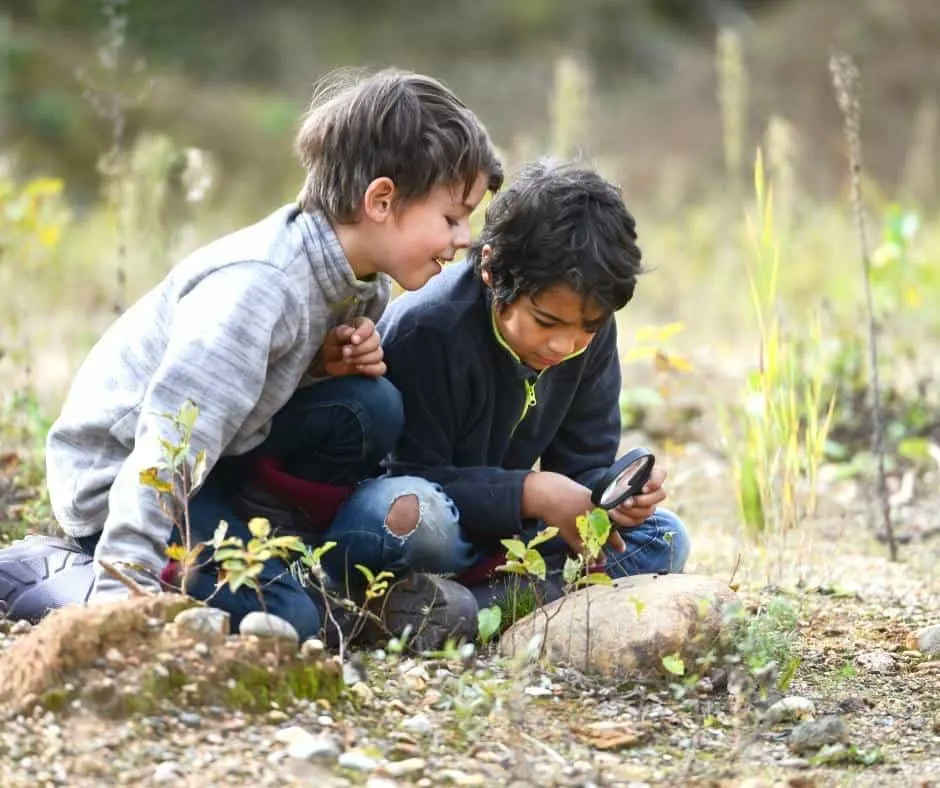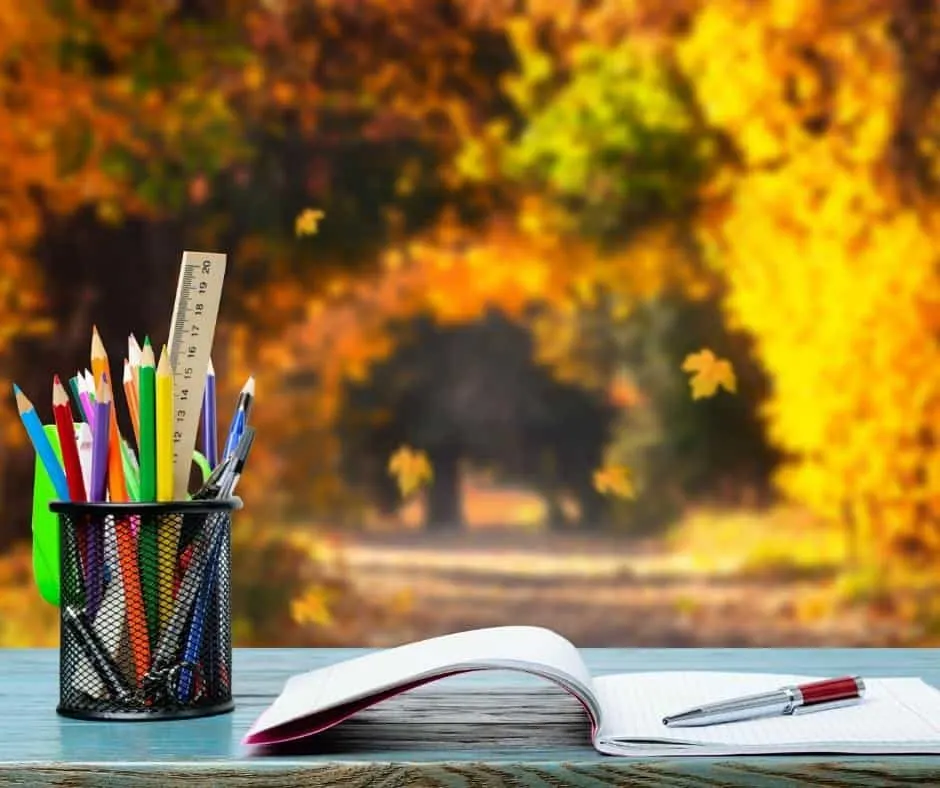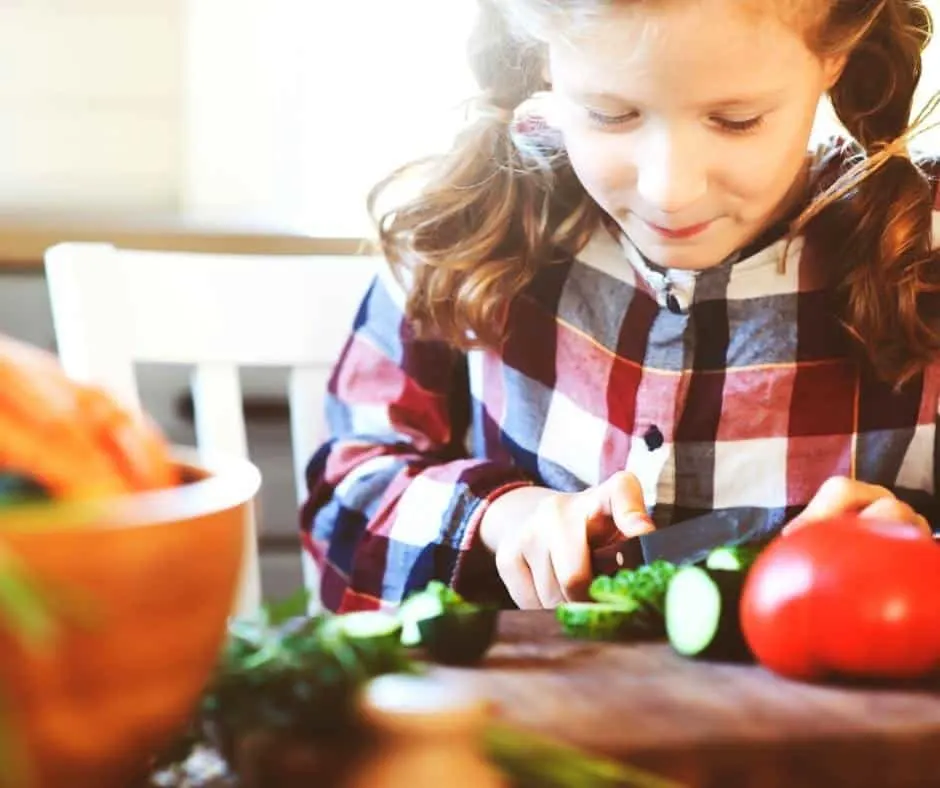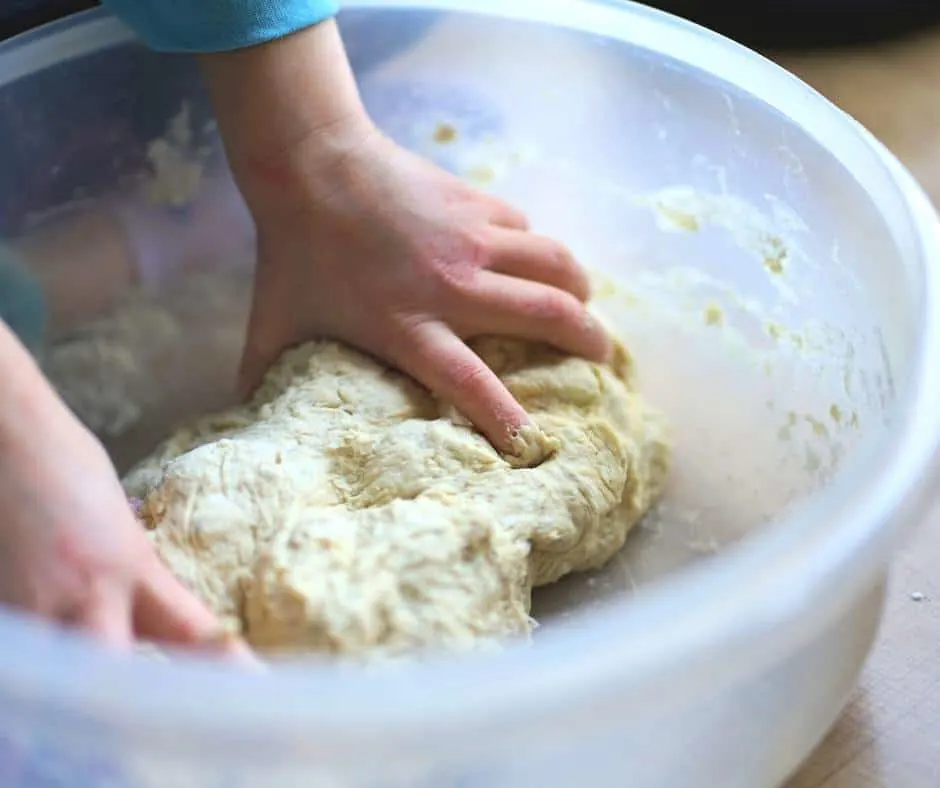In honor of the National Day of Unplugging, we are taking a look this week at what it means to unplug your homeschool. Even if your child doesn’t have their own cell phone or social media account, there’s a good chance technology plays a bigger role in your homeschool than you imagined it would when you started.
Whether you’re doing all online courses or just using the Internet for a few key resources, setting aside a 24-hour period (or more) for a digital detox from electronic devices can have a profound impact on your homeschool.

Affiliate disclosure: This post may contain affiliate links, which means we may receive a commission if you click a link and purchase something that we have recommended. Please read our disclaimer for more details.
What is the National Day of Unplugging
The discipline of Sabbath-keeping—setting apart one day in seven for physical and spiritual rest and restoration—has lost the gravitas it once held. There was a time when working on the Sabbath day, even unintentionally, would cost you your life.
Now, we often don’t even think about it, or, if we do, we think it’s sufficient to simply be away from our paid place of unemployment. But even then, we’re not really “away,” are we?
Even if our jobs don’t technically call for remote work, these nifty little devices in our pockets, on our nightstands, even on our wrists, allow us to stay connected to work—and everything else in the digital world—24/7.
We’ve come a long way.
Or have we?

Our devices seem to have reached a point where they’re no longer serving our needs but dictating how we spend our time. Ask yourself when was the last time you had an uninterrupted meal?
You may be surprised to find out that too much screen time could be causing you to work harder. Research by the Barna Group, published in The Tech-Wise Family by Andy Crouch, indicates that technology is actually making our lives harder.
Forty-two percent of parents say they waste a lot more time because of technology and forty percent say they are distracted. Almost a quarter said they feel like they can never disconnect from their devices.
The negative consequences of being so connected to our digital devices are sure to increase stress levels and have an impact on our mental health.
In response to these trends, The Sabbath Manifesto, a creative project that aims to revitalize ancient Jewish traditions, came up with the National Day of Unplugging.
Their goal with this national unplugging day is to encourage people to take a 24-hour respite from all technology. No phones. No laptops. No tablets. No Apple watch. Just good old-fashioned human connections with real humans in real life.
In 2020, the National Day of Unplugging will be observed from sundown on March 6th to sundown on March 7th, following the traditional Jewish day of rest.
Unplugging Your Homeschool
The Sabbath Manifesto is not unique in calling for families to disconnect their devices. Rebooting, an outgrowth of the Sabbath Manifesto, and the Unplug Collaborative are just a few examples of the #unplugged movement is growing in all corners of the world. From forest kindergartens to digital detoxes to giving up Facebook for Lent, the idea that we need to regain control over our use of technology is spreading faster than a computer virus.
But what about in your homeschool? In the last decade, virtual learning has almost become standard practice. And understandably so, after all, it allows us to give our children the benefit of a personalized experience in spite of our hectic world.
But analyzing the role that technology is playing in your homeschool is a good first step to ensure that you are keeping it in its proper place.
The unplugging homeschool movement is evident in a wide variety of homeschooling methodologies. In the Waldorf and Montessori approach to education, a technology-free homeschool is deemed essential.
Many homeschool philosophies defer academic learning until age 7 or 8 to ensure the younger years are spent playing and exploring. Children benefit greatly when we allow them space and offer them opportunities to be creative of their own accord.
Here are a few easy ways to work toward a more unplugged homeschool and the benefits of doing so.
5 Easy Ways to Create an Unplugged Homeschool
We’re fortunate to have so many resources available at our fingertips with information just a few clicks or Amazon Alexa prompts away. The challenge lies in ensuring a well-rounded education for our children while still fostering a sense of curiosity about the world and lifelong love of learning.
There are deep personal connections to be made beyond the confines of technology. It’s up to us as homeschooling parents to ensure we offer our children a broad, all-encompassing view of the world.
1. Spend More Time Reading Together

Homeschooling families know that one of the many benefits of tech-free days is having more time to come together around the kitchen table or cuddling up on the sofa to listen to stories. There are several homeschool advocates dedicated to promoting this family reading time, such as Sarah McKenzie and her Read-Aloud Revival and Julie Bogart’s Poetry TeaTime.
The Read-Aloud Revival encourages parents to read to their children, even into their teen years. McKenzie, who is also the author of Teaching from Rest, teaches parents that reading aloud to our kids gives us a chance to be fully present and to connect with them in a meaningful way, particularly when life is too busy.
Julie Bogart popularized Poetry Teatime and similarly brought families together to savor poetry with a warm cup of tea and freshly baked brownies. Her book, The Poetry Teatime Companion includes both British and American poems that families can incorporate into their time together.
2. Get Outside and Enjoy Nature

Homeschool co-ops throughout the country have recognized the success of nature schools and forest kindergartens and have incorporated this guided play into their offerings.
Companies dedicated to promoting the European Forest Kindergarten model have emerged in recent years. Children take part in full-day, immersive outdoor activities and are taught survival skills.
One day may be dedicated to learning how to build a fire or filtering stream water to drink. The next class may include a wild edibles nature walk and tree-climbing.
It’s not uncommon to see a 5-year old using a knife to cut wood in a forest school. Left to play, climb and discover the outside world of nature on their own terms, kids can play safely knowing adults are available if needed.
Studies have shown that it is this type of ‘unsupervised’ play that encourages problem-solving skills among young children.
Lifelong Benefits of Getting Children Out in Nature
In addition to the obvious benefits they’ll receive from the fresh air, children who develop a connection to the trees and plants around them have a deeper sense of the environment and the world as they age. Yes, being immersed in nature on a regular basis is good for the mind, body, and soul, but it also ensures they stay connected as adults.
This is helpful not just for their health but for the world as we know it. A child is more likely to have respect for the earth when nature is a significant part of their daily lives. They’re more apt to pick up litter when they go out and recycle and make eco-friendly shopping choices as adults.
3. Make Space for Creativity

When we remove the distractions of technology, we allow more space for our children (and ourselves) to be creative. One way to do this is to invest in some quality art supplies like watercolors.
Spend an afternoon perusing your favorite nature books. Everyone can try their hand at painting the birds or insects in the books.
A great resource for this is the Julia Rothman Nature Anatomy book. It features a variety of wildlife and plant life that can be made into wonderful works of art by children (and adults) of all ages.
By sitting with our kids and making time to create, we are instilling in them the importance of expression and creating. In a world that emphasizes consuming a steady stream of content on a regular basis, this is a much-needed change for our children.
4. Cook Like Your Grandmother Did

We’re all stretched thin, to a point where quick and easy meals are the priority. We don’t have nearly as much time available to spend in our kitchens as our grandparents did.
What we do have are kids in the kitchen helping us measure and pour, stir and scrape. Cooking with our kids is an excellent unplugged homeschool activity that not only increases connection but also incorporates math and life skills into our daily tasks.
Creating an unplugged homeschool means that living life is an education in and of itself.
What if we took it a step further and opted out of some of our convenience foods. Could we start making from scratch some of the things we toss into our shopping cart without a second thought?
Consider purchasing a cheese-making kit and making your own mozzarella cheese for the pizza. You could use your own home-grown tomatoes or support your local farmers and load up on produce.
Buy or grow cucumbers and some fresh herbs and spend an afternoon making dill pickles with your children. Making your own salsas, jams, butter, and sauces is a great way to get in the kitchen with your children.
It’s also a fun and productive way to unplug in your homeschool.
5. Incorporate Routine and Set Expectations
Waldorf schools incorporate Bread Day into each week and it’s something we’ve done in our family since preschool. Kindergarten students thresh wheat by hand using a hand grinder. They create a flour and add yeast and water.
Then comes the joy of kneading! They form their dough into balls and wait for them to bake before enjoying a yummy snack that they created with their own hands.

This tradition gives them new life skills and teaches them the valuable role of work in our lives. They make connections around the food they eat when they’re involved in the process.
While it may not make them less discriminating eaters now, they will be more apt to make healthier food choices as they grow. Plus, the entire process is just fun!
An unplugged homeschool allows us to create a routine in our lives vs. following a schedule. This change allows for expectations and the ebbs and flows of life while maintaining the structure that young children need.
What to Read on National Day of Unplugging
It may take some trial and error and a few stops and starts to move toward a more unplugged homeschool.
Technology is so ingrained in our daily lives that making a concerted effort to unplug takes time. Consider a few of the following books to help you change your mindset and encourage an unplugged homeschool. Any of these would make the perfect activity to do on the National Day of Unplugging, or on any other digitally detoxed day.
- Last Child in the Woods: Saving Our Children From Nature-Deficit Disorder – Richard Louv
- Forest School Adventure: Outdoor Skills and Play for Children – Naomi Walmsley and Dan Westall
- The Nature Connection – Clare Walker Leslie
- Vitamin N: The Essential Guide to a Nature-Rich Life – Richard Louv
- The Nature Fix: Why Nature Makes Us Happier, Healthier and More Creative – Florence Williams
- How to Raise a Wild Child: The Art and Science of Falling in Love with Nature – Scott Sampson
- Unplugged: Ella Gets Her Family Back – Laura Pedersen
- The Unplugged Family Activity Book: 50 Simple Crafts and Recipes for Year-Round Fun – Rachel Jepsen Wolf
- The Tech-Wise Family: Everyday Steps for Putting Technology in Its Proper Place – Andy Crouch
- 12 Ways Your Phone Is Changing You – Tony Reinke and John Piper
Making the transition from a technology-centric homeschool to a more nature-based one can be challenging without the proper mindset. Additionally, incorporating more opportunities for families to connect one-on-one may not always be well-received at first.
Doing so in an organic way with some of the above-mentioned approaches can create a home and homeschool where being unplugged is welcomed and anticipated by our children.
Click here to the National Day of Unplugging pledge and receive free resources from the Sabbath Manifesto.

Marie has been writing professionally for over 20 years; travel and writing have been a significant part of her life and career. She successfully homeschooled her three now-adult children through high school and currently homeschools her youngest son. As a veteran homeschooler, Marie spends her time as a freelance writer and chronicles her homeschool journey, daily life, and family travel adventures on several parenting websites.




